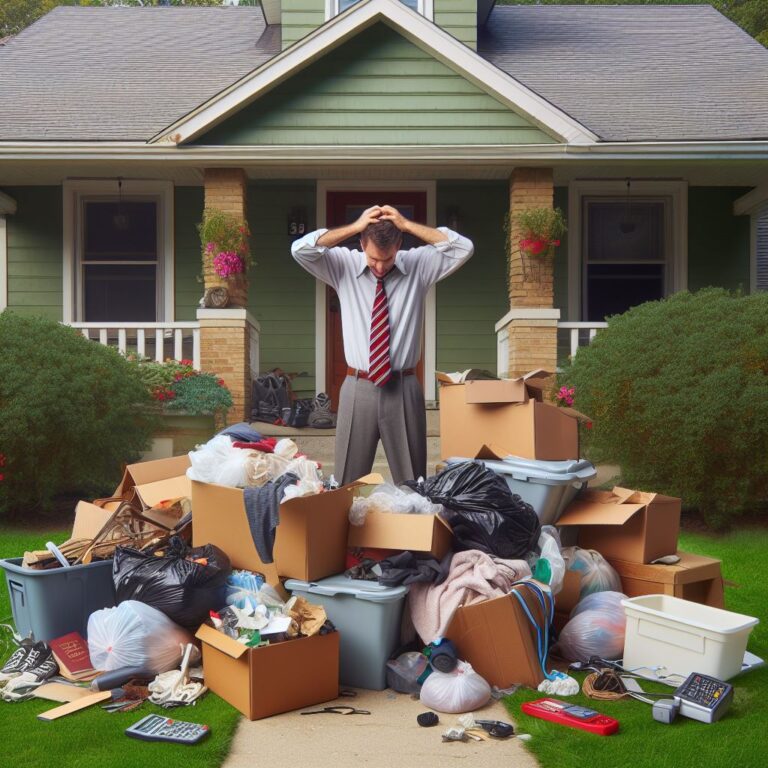Water damage in homes can have far-reaching consequences that may compromise safety, health, and structural integrity.
Mold growth, for instance, can quickly proliferate in the aftermath of water damage, posing significant health risks as mold spores become airborne and infiltrate air ducts.
Furthermore, water damage weakens wood framing, making it susceptible to dry rot and insect infestations. Repairing such damage can be costly and compromise the stability of a house.
Additionally, water damage can impact the electrical system, leading to premature failure of components.
Lastly, foundation damage can occur due to water pooling around the foundation, resulting in cracks and settling.
Prompt and thorough mitigation of water damage is crucial to safeguard the well-being and long-term stability of affected homes.
Key Takeaways
- Mold growth can occur quickly after water damage and can cause health issues.
- Water-damaged wood can lead to rot and insect infestations, compromising the structural integrity of a home.
- Electrical damage can occur as a result of water damage, posing safety hazards.
- Water damage can lead to foundation damage, causing various issues such as cracked walls and uneven floors.
Hidden Mold Growth
The presence of hidden mold growth in water-damaged homes poses significant health risks and financial challenges.
Mold can begin to grow within a few hours after water damage occurs, and its spores can travel through the air and become lodged in air ducts. Exposure to mold can lead to a range of health issues, including skin rashes and respiratory infections.
The problem with hidden mold is that it can spread into unseen spaces, making it difficult to detect and costly to remove. This is particularly concerning for children, who are more susceptible to the health effects of mold exposure.
Therefore, it is crucial to address water damage promptly and thoroughly to prevent the growth of hidden mold and mitigate its associated risks.
Hidden Rotted Wood
Water damage in homes can lead to hidden rotted wood, posing potential risks and costly repairs. When water infiltrates the structure of a house, it can weaken the wood framing over time. This water-damaged wood is prone to future dry rot and insect infestations, further compromising the structural integrity of the house.
Repairing water-damaged framing can significantly increase repair costs, as it may require extensive replacement. Additionally, hidden rotted wood can go unnoticed for long periods, making it difficult to detect and address before it causes further damage.
Identifying and replacing water-damaged wood is essential to prevent the spread of rot and maintain the stability of the home. Regular inspections and prompt repairs are crucial to avoid more extensive and expensive issues down the line.
Hidden Electrical Damage
Hidden electrical damage can pose serious risks and require immediate attention in water-damaged homes. When water infiltrates a home, it can cause unexpected damage to the electrical system. Components such as cabling, receptacles, and light switches may suffer premature failure, leading to potential electrical hazards.
Repairing or replacing electrical components affected by water damage is necessary to ensure the safety of the home's occupants. Additionally, water damage to the electrical system can increase the risk of electrical fires. It is crucial to have a professional electrician assess and repair any hidden electrical damage to avoid future issues and maintain the integrity of the home's electrical system.
Taking prompt action can prevent further damage and protect the well-being of those living in the water-damaged home.
Hidden Foundation Damage
Foundation damage in water-damaged homes can have severe consequences if left unaddressed. It is essential to recognize and address hidden foundation damage to prevent further structural issues and costly repairs. Here are three key points to consider:
- Clogged gutters can cause water to overflow and pool around the foundation, leading to cracks and damage.
- Saturated ground exerts pressure on the foundation, potentially causing it to settle and leading to uneven floors, cracked walls, and damaged chimneys.
- Erosion of the soil as water drains away can further compromise the foundation's stability.
Identifying and repairing foundation damage promptly is crucial to maintain the structural integrity of the home. Neglecting these issues can result in more significant damage and expensive repairs down the line. Therefore, homeowners should prioritize addressing hidden foundation damage in water-damaged homes.
Health Risks of Mold Exposure
Exposure to mold in water-damaged homes can pose significant health risks.
Mold growth in these environments is common and can occur within hours after water damage. Mold spores can travel through the air and become lodged in air ducts, leading to respiratory issues and skin rashes.
The presence of mold in unseen spaces makes it difficult to detect and expensive to remove. Children are particularly vulnerable to the health risks associated with mold exposure.
It is important to address water damage promptly to prevent mold growth and mitigate the potential health hazards. Professional remediation is often necessary to ensure thorough removal of mold and reduce the risk of further health complications.
Long-Term Effects of Rotted Wood
Rotted wood in water-damaged homes can have significant long-term effects on the structural integrity of the property. Here are three key points to consider:
- Weakening of the wood framing: Water damage weakens the structural integrity of wood framing in a home. This can lead to future issues such as dry rot and insect infestations.
- Increased repair costs: Repairing water-damaged framing can be costly, especially if the damage is extensive. The cost includes not only the replacement of the damaged wood but also the potential repairs to other affected areas.
- Compromised structural integrity: Rotted wood compromises the overall stability of the house. It can lead to sagging floors, leaning walls, and even collapse in severe cases. Identifying and replacing water-damaged wood is essential to prevent further damage and ensure the long-term stability of the property.
Electrical Safety Concerns
Damage caused by water can also pose serious electrical safety concerns in homes. When water infiltrates electrical systems, it can lead to various issues and hazards. Components such as wiring, circuit breakers, outlets, and switches can be affected by water damage, resulting in premature failure or malfunctioning. This can lead to electrical shocks, short circuits, and even fires.
Moreover, if water comes into contact with live electrical wires, it can cause electrocution and serious injuries. It is crucial to address any water damage to the electrical system promptly and properly. This may involve repairing or replacing damaged components, ensuring proper insulation, and implementing necessary safety measures.
Seeking professional assistance from a licensed electrician is recommended to ensure the electrical system is repaired and restored safely.
Signs of Foundation Damage
Furthermore, it is important to be aware of the signs that indicate potential foundation damage in water-damaged homes. Here are some key signs to watch out for:
- Cracks in walls, floors, or ceilings: These can be an indication of foundation movement and settlement.
- Uneven or sloping floors: If you notice that your floors are no longer level or have a noticeable slope, it could be a sign of foundation damage.
- Sticking doors and windows: Foundation movement can cause frames to shift, making it difficult to open and close doors and windows smoothly.
It is crucial to address foundation damage promptly to prevent further structural issues. If you notice any of these signs, it is recommended to consult with a professional foundation repair specialist to assess the extent of the damage and recommend appropriate repairs.
Costly Repairs and Structural Consequences
Repairing water-damaged homes can lead to significant financial burdens and potential structural consequences. The cost of repairs can quickly add up, especially if the damage goes unnoticed or is left untreated for an extended period.
Structural consequences may arise from hidden issues such as hidden mold growth, rotted wood, electrical damage, and foundation damage. Mold can spread rapidly in damp environments and cause health issues, while rotted wood can compromise the integrity of the home's framing. Water damage can also affect the electrical system, leading to premature failure of components and safety hazards. Additionally, foundation damage can result in cracked walls, uneven floors, and costly repairs.
Being aware of these potential consequences is crucial in order to address water damage promptly and minimize further damage.
Frequently Asked Questions
How Can I Prevent Mold Growth in My Home After Water Damage?
After water damage, it is crucial to act quickly to prevent mold growth in your home. Remove any standing water, dry affected areas thoroughly, and use dehumidifiers to control moisture levels. Promptly address any leaks or sources of water to prevent future damage.
What Are Some Common Signs of Rotted Wood That I Should Look Out For?
Some common signs of rotted wood include soft or spongy areas, discoloration, and the presence of fungus or mold. It is important to promptly address rotted wood to prevent further damage and ensure the structural integrity of your home.
Are There Any Safety Precautions I Should Take Before Attempting to Repair Electrical Damage Caused by Water?
Before attempting to repair electrical damage caused by water, it is important to ensure safety. Disconnect power, wear protective gear, and consult a qualified electrician to assess the extent of the damage and provide guidance on proper repairs.
How Can I Determine if My Home's Foundation Has Been Damaged by Water?
To determine if your home's foundation has been damaged by water, look for signs such as uneven floors, cracked walls, and damaged chimneys. Additionally, inspect for clogged gutters and saturated ground, as these can contribute to foundation issues.
What Are Some Potential Long-Term Consequences of Ignoring Water Damage and Not Addressing It Promptly?
Ignoring water damage and not addressing it promptly can lead to hidden mold growth, rotted wood, electrical damage, and foundation damage. These consequences can jeopardize the structural integrity of a home and pose health risks.






